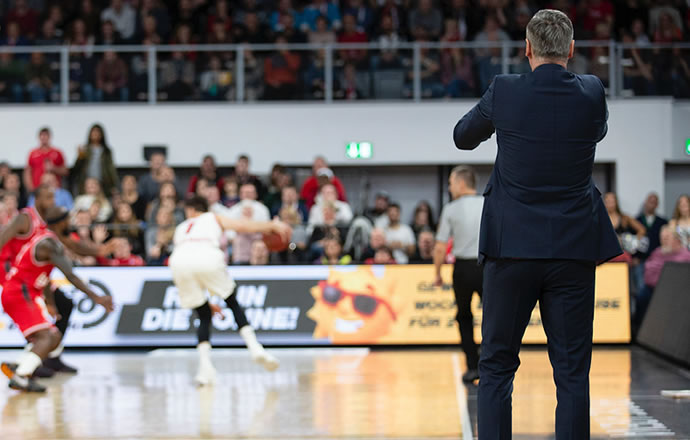Although nobody likes to talk about it, it is by no means unusual to experience stress at work.
It’s a problem that now affects one in three people. While the incidence of mental illness is not increasing, related absences are. Employees should therefore closely examine their working conditions and working environment and ask themselves the following questions: What exactly restricts staff? How can their situation and thus their effectiveness be improved? The relevance of this issue is not restricted to the office, however – it also applies to manual assembly in production. It covers strategies for preventing chronic pain caused by mental stress, for example. Work benches, chairs and factory equipment play a key part in combating mental stress in the workplace – they should be individually adjustable and adaptable both to production requirements and the needs of employees.
Stress in the workplace – clear statistics
When employees have mental health issues and are unable to work productively, this is not generally due to a single cause. A top priority therefore has to be creating a positive environment. There is still work to be done in this respect, however. According to the German Federal Ministry of Labour and Social Affairs, the number of sick days caused by stress has more than doubled since 2007. In addition, a study by Techniker Krankenkasse (a German statutory health insurance provider) found that mental health issues were the most common reason for sick days in 2018. When the pace of life is as fast as it is today, change is constant. Of course, all that change takes a toll – ramping up stress, with inevitable negative mental health impacts. While these may initially present as reduced concentration and signs of fatigue, they can go on to cause burnout or depression.
The close links between mind and body are well established. For example, the increased muscle tension associated with mental health issues can quickly lead to spasms and chronic pain, which in turn cause further problems. It’s a vicious circle that has a negative impact on the performance of the employees concerned, and can even lead to absence due to illness. One way or another, the productivity of the company also takes a hit. Employers should therefore do all they can to ensure their staff have a positive working environment. There is a wide range of potential measures to combat psychological stress in the workplace, including adapting areas of activity, reconfiguring work organisation and processes and taking account of ergonomic principles.
Ergonomics to take the strain off staff
Factors such as work satisfaction should not be underestimated. In addition to the positive effect on mental wellbeing and work output, it also reduces staff turnover and illness rates. Ergonomic principles are therefore of vital importance, as they take into account the specific requirements of each individual member of staff. These principles include modifying the lighting as a measure to counter stress in the workplace. Less-than-optimum lighting conditions have direct negative effects on employees’ concentration and thus also performance – they literally lose sight of their actual work. Flickering, excessively bright or dazzling light should be avoided, for example, as should overly stark contrasts and increased shadows.
The symptoms of tiredness that arise drive up error rates. Well thought-out and needs-based lighting, on the other hand, helps boost performance. It should be noted, however, that lighting levels should always be tailored to the task at hand. Generally speaking, lighting should be even with soft shadows. A holistic approach is also needed when setting up a work bench. For example, when using a modular system, work benches can be individually adapted to various processes and requirements. These ergonomic, height-adjustable work benches eliminate the need for unnecessary and stressful movements, which is the basis for finding a perfect solution for every employee.
Lean principles as a countermeasure for stress in the workplace
Material supply and tool stowage also play a major role. In this case there are special optical aids to make things easier for employees, including different-colored containers and a consistently applied labeling system. This helps prevent material being mixed up, which in turn eases time pressure and stress. In addition, providing information on monitors integrated directly into the work bench also has a part to play in optimizing manual production processes. Companies aiming to both take the strain off their employees and boost their efficiency should also think about the combination of working processes. There is factory equipment specially designed with this in mind. For example, the 4E FIFO-Shooter from item combines a height-adjustable work bench with a FIFO rack.
This is an example of how lean production optimizes working processes. This combination ensures factory equipment can be rapidly reconfigured when manufacturing different variants. The look and properties of the work bench also have a direct impact on well being. In this respect, the 5S method is ideal as a measure that will achieve rapid results in reducing stress in the workplace. This is also based on lean production principles and consists of five steps – “sort”, “set in order”, “shine”, “standardize” and “self-discipline”. The cleanliness, order and safety of a working environment organized in line with 5S ensure employees feel more comfortable. Ultimately, this satisfaction boosts their performance capabilities. What’s more, having a structured working environment can help new staff get to grips with their tasks faster.
Are you a fan of anything to do with ergonomics? Then we have something that might just help! Simply subscribe to the item blog by completing the box at the top right!
.









